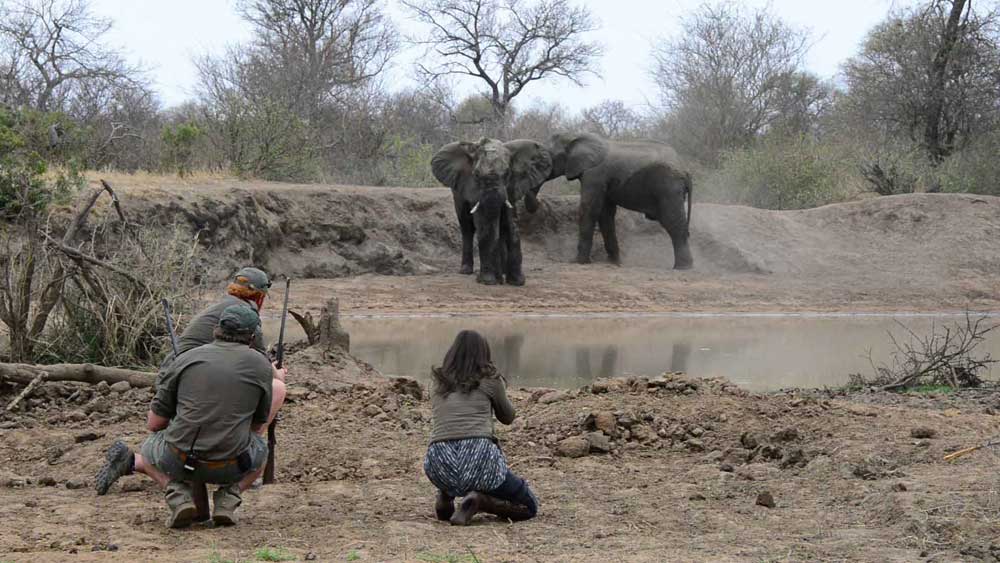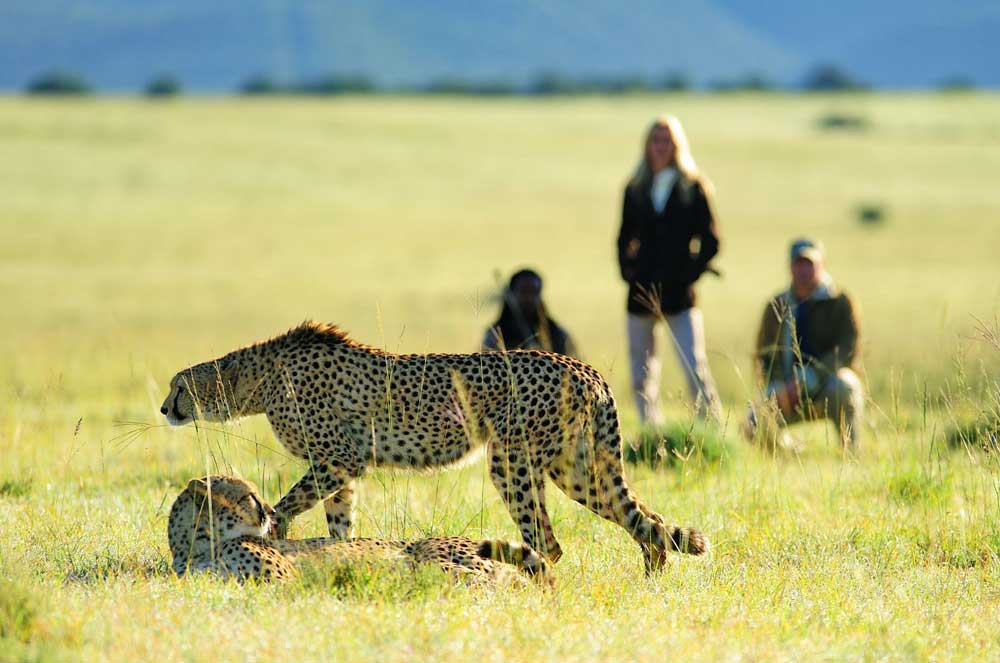Walking Safaris in Africa
Taking to the African bush on foot is one of the more immersive and incredible experiences to enjoy while on safari. Most bush camps’, luxury lodges and tented safari camps offer some form of a walk, generally a once-off morning walk or a stroll after brunch. But for the adventurous amongst you, there are some amazing walking safaris on offer that walking, walking and nothing but walking. Unless it rains, then you drive! We take a look at some of the common questions that get asked about walking safaris in Africa.

Contact us to Book Now
What is a walking safari?
Explore Africa on foot at a slow pace with professional walking guides, who will point out interesting animal tracks, fauna and flora. Follow a dung beetle, guess which animal made that scat and even track bigger animals. Most people in a game viewing vehicle miss the smells and sights to be found when you traverse the wild in a walk. Generally, you will walk between 5 and 12km’s per day, split into a morning and evening walk. You will spend the rest of the time in camp, avoiding the midday heat. Camps tend to be tented safari camps, with a few luxury touches while still maintaining the authenticity of a walking safari from a bygone era.

Are walking safaris safe?
You are walking in the wild, so there is a small element of risk. However, guides who walk are top guides with years of training behind them. They know the animals and the area incredibly well and many carry rifles, where allowed. You will be briefed before you start, you must listen to every instruction and you will have a blast. You will maintain distance to the larger animals and your guide will keep you all downwind from them. Walks are generally with 2 guides or a guide and a tracker team so you will be in good hands.

What to wear on walking safaris?
Remember those suggested packing lists we give you that list the khaki and the olive greens? This is why you need the natural colours, to walk in the bush. While you can get away with colour on the back of a vehicle (we all do so our photos look fab!) when you walk you need to blend in. We suggest long trousers and a few layers on top. It can warm up quickly in Africa so pack a small daypack to carry your tops and a bottle of water. Comfortable clothes are important as you are going to be walking for at least 5 hours a day.
What shoes to wear on a walking safari?
Check the weather before you leave! If it is going to be the rainy season or you have rivers and rain forests to traverse, pack your hiking boots. They will keep your feet dry and your ankles protected as you slip-slide your way through the muddy parts. Most walking safari trails do happen in the dry season so a good pair of trail sneakers will do the trick! If you want to wear shorts, consider a pair of gators to protect your ankles from any low bush and thorns.

Where can I do a walking safari in Africa?
Multi-day walking trails are gaining in popularity around the wildlife hotspots of Africa! In South Africa, you can do walking safari trails in the Greater Kruger National Park area and malaria-free walks in Shamwari Game Reserve in the Eastern Cape and at Sanbona Wildlife Reserve in the Western Cape. In Botswana, you can explore the Footsteps across the Delta walking safari, in Zimbabwe the Hwange National Park trail and the Mana Pools area. Zambia is well known for epic walking safaris in South Luangwa, where you walk from Bushcamp to bush camp and also enjoy a night under the stars on the banks of the river. Overnight hikes in the Namib Desert in Namibia, Masai trails in Kenya and trails in Selous in Tanzania all offer excitement for the intrepid visitor.

Will I see the Big 5 on a walking safari?
Maybe! The Big 5 are on top of everyone’s wish list, which is why we suggest a lodge stay as well. It is unlikely you will see all the Big 5 on foot. You could see elephants and buffalo and rhino, from a distance. Perhaps the swish of a leopards tail, if you are lucky. Many of the walking trails camps do have a backup vehicle so if the big 5 sighting is too good to resist, you will return on the vehicle. You could see cheetah while walking, especially in areas where they are used to the guides.


